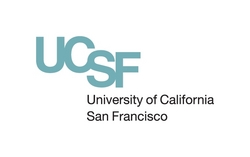
Conozca más sobre UCSF Researchers Use New Tools To Move In On Cancer Susceptibility Genes, respecto a Educacion Virtual
EDUCACION VIRTUAL, Información objetiva UCSF Researchers Use New Tools to Move in on Cancer Susceptibility Genes analizada en la sección de educacion virtual para documentación de nuestros visitantes.
Ferndale, WA (Vocus) January 12, 2009
UCSF researchers have used a new strategy to study inherited susceptibility for skin cancer in mice. In the process, they have identified a network of genes that may play a key role in controlling this susceptibility. The technique, the scientists say, could be used to identify such genes in human cancers.
The finding, reported in the Jan. 11, 2009 Advance Online Publication of Nature, builds on a promising technique called genetic network analysis, which allows scientists to analyze complex systems. The technique has been used to study heritable traits such as obesity and to study the workings of organs such as the human brain. However, it has never been used in cancer genetics, due to the complexity in studying how genetic differences influence whether an organism will develop cancer.
«This is the first time these techniques have been used to analyze cancer susceptibility. Using this framework, these methods should be applicable in many different areas of cancer research or other types of heritable diseases that thus far have been difficult to study,» says senior study author Allan Balmain, PhD, UCSF professor of biochemistry and Barbara Bass Bakar Distinguished Professor in Cancer Genetics at the UCSF Helen Diller Family Comprehensive Cancer Center.
Genetic network analysis produces a map of how key genes interact with each other to control physiological functions and structures. Applying this tool to cancer research opens a new window on the disease.
«There are rare mutations that strongly predispose people to getting a type of cancer, but most cancers are caused by a combination of environmental influences and moderately influential differences in the DNA that an individual is born with. The kinds of changes we are studying are not instant tickets to cancer but are predispositions. This is something that is much harder to track but could be very useful in the future realm of personalized medicine,» says David Quigley, MA, the first author on the paper and the lead computational expert on the project.
Significantly, the UCSF researchers used only a personal computer to map out the relevant gene networks. Previous studies using this technique have required supercomputers or other forms of high-powered computing. Reducing computing requirements should allow many more laboratories to use genetic network analysis techniques.
In their study, the researchers bred together laboratory mice of the species Mus Musculus with wild mice of the species Mus Spretus. M. Musculus has strong susceptibility to skin cancer and M. Spretus has strong resistance to skin cancer.
The researchers attempted to induce skin cancer in the mixed offspring of these mice and then examined how genetic control of gene expression affected their tumor susceptibility. By examining genetic differences between mice who did and did not develop skin cancer, the researchers identified the Vitamin D Receptor as a candidate master regulator for skin cancer in the mice.
Vitamin D levels in the blood have long been recognized as having an influence on skin functions and susceptibility to inflammatory diseases in humans and mice. Diminished Vitamin D levels or a faulty Vitamin D Receptor gene have also been associated with the propensity for various types of cancer in people and mice.
«Now we have shown Vdr can be linked to skin cancer in mice using genetic network analysis methods,» says Balmain. Because man and mouse share significant similarities in cancer genetics and cancer development, he says, gene candidates for cancer in mice could directly translate into gene candidates for cancer susceptibility in humans.
Genetic networks comprise dozens or hundreds of genes that interact by switching on and off in response to internal stimuli, external stimuli, or some combination of both.
This switching process, called gene expression, has been extremely difficult to measure and assess due to the sheer numerical complexity of the process. In part, this complexity explains why most cancer genetics research to date has focused on identifying clear interactions between single genes and a specific type of cancer. However, these approaches so far have not been sufficient to explain how gene expression impacts susceptibility to many types of cancers.
The researchers also used their technique to identify gene networks that appeared to represent either structural or functional components of the skin, such as skin-resident cell types (hair follicles, muscle, melanocytes, haematopoietic cells) and physiological (for example, inflammation) or cellular (for example, cell cycle) functions.
They discovered that a gene called Lgr5 that is expressed in stem cells of the skin and intestine is a candidate master regulator for the development of hair follicles. In the context of skin cancer, hair follicle development may be important because the hair follicle is a continuously regenerating organ system. Scientists have used this system as a model for studying cancer development in different organs.
According to the researchers, their research approach could easily be replicated for genetic network analysis of virtually any type of moderately or partially heritable cancer, as well as for other inherited diseases that do not have single-gene binary switches and result from more complex genetic interactions. Potential research candidates could include lung, breast or colon cancers, as well as inherited diseases outside the realm of cancer such as autoimmune disorders.
Additional co-authors of the paper were: Minh D. To of the UCSF Comprehensive Cancer Center and the Department of Surgery; Jesus Perez-Losada of the Departamento de Medicina, Facultad de Medicina, Universidad de Salamanca; Facundo G. Pelorosso of the UCSF Comprehensive Cancer Center; Jian-Hua Mao of the UCSF Comprehensive Cancer Center and the Life Sciences Division, Lawrence Berkeley National Laboratory, University of California, Berkeley; Hiroki Nagase of the Roswell Park Cancer Institute and Nihon University, and David Ginzinger of the UCSF Comprehensive Cancer Center.
The study was funded primarily by the National Cancer Institute. Additional funding for the research or personnel involved in the research came from the Sandler Foundation postdoctoral research fellowship program, the Spanish Ministerio de Educacion y Ciencia, the European Community, the Fondo de Investigaciones Sanitarias and Junta de Castilla y Leon.
UCSF is a leading university dedicated to promoting health worldwide through advanced biomedical research, graduate-level education in the life sciences and health professions, and excellence in patient care.
Contact:
Jennifer O’Brien
(415) 476-2557
Web: http://www.ucsf.edu
###
Ver más temas de educacion virtual
PENSAMIENTOS SOBRE UCSF RESEARCHERS USE NEW TOOLS TO MOVE IN ON CANCER SUSCEPTIBILITY GENES

Para nosotros es trascendental conocer las experiencias y espectativas respecto a las temáticas que publican las distintas instituciones a través de nuestro base de datos de educación, y es por eso que agradeceríamos mucho el que nos compartieras cualquier aspecto relacionado con las categorías sugeridas, en este caso con educacion virtual.
educaya.org no posee ninguna relación con UCSF Researchers Use New Tools to Move in on Cancer Susceptibility Genes ni las empresas, personas o instituciones que difunden los ensayo y/onoticias sobre o relacionados con educacion virtual. Si quiere visitar el web original de ucsf researchers use new tools to move in on cancer susceptibility genes por favor diríjase a los vínculos de referencia escritos arriba en el artículo respecto a Educacion virtual.
 educaya.org Temás de Educación, Virtual, Postgrados, Maestrías, Carreras técnicas, Colegiós y demás
educaya.org Temás de Educación, Virtual, Postgrados, Maestrías, Carreras técnicas, Colegiós y demás


